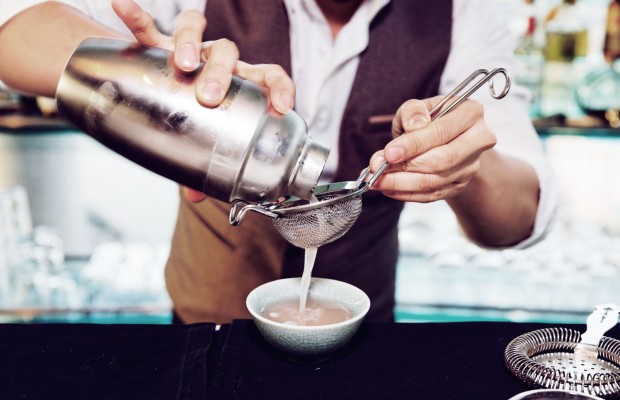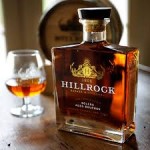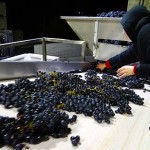Cocktails With Culinary Accents: The Best Culinary Blends for Drinks

The art of mixology is founded upon fresh thinking. Over the years, the experimentation and creativity of bartenders has resulted in the elaboration of cutting-edge, bold drinks with distinct flavors. Borrowing spices, herbs, vegetables and other ingredients traditionally found in our kitchens, mixologists are contributing to the evolution of drinks today. Here is how to best use these unconventional elements at home to create the most perfect cocktails and drinks.
Let’s start with basics first: spices
Spices are an affordable, natural way to give a kick to a cocktail. A staple commonly found in American pantries, cinnamon is probably the queen of all spices – and has uses that extend beyond the world of baking. Cinnamon barks are perfect to give your cocktail the comforting notes that will delight even children, who cannot get enough of the spice’s agreeably sweet, woody aroma that is delicate yet intense. It is often associated with drinks whose profiles match the flavors of fall and winter, like Grog, eggnog, vin chaud or apple cider, but works well with modern, seasonal cocktails as well. Go for lightly aged rums or un-aged brandies as a base: their soft, vanilla and fruit qualities pair well with the spice’s familiar flavor.
However, bear in mind that cinnamon works better with warmer than colder cocktails because it is fairly slow to release fragrant essential oils: it will simply not dissolve fast enough to alter the taste of a cold cocktail. If you feel like experimenting with it, you can always try and soak a few cinnamon sticks in a “neutral” alcohol like vodka or brandy. Patience, though: this process might take from a few days to a few weeks: cinnamon syrup may do the trick.
For bolder flavors, a spice mix may do the trick
In this respect, contributions to the world of mixology come from unexpected territories. Spice companies, such as Ravenswood-based Urban Accents, have started concocting some incredible cocktail-only blends for home mixologists. According to co-founder Jim Dygas, a good mix ‘must be bold enough to taste flavor notes through the added spirits, but not overtake the whole cocktail’.
Their Wine and Cider Mulling Spice is a complex blend of cinnamon, whole star anise, cloves, orange peel, lemon peel, orange oil and vanilla extract. It is a foolproof concoction to create some of the most surprising, pleasant cocktails. Dygas recommends using it to add a touch of sophistication to your traditional mulled wines, like a moderate priced, full-bodied red, but suggests experimenting with it as well.
‘Mixed with Apple Cider, it’s a perfect base for bourbon drinks. Lately we’ve been experimenting with creating dense mulled brews and then adding them to ginger beer and rum,’ he adds.
The creative spice expert suggest borrowing into your kitchen cabinets to make your own savory cocktails as well, like Urban Accents’ Spicy Sriracha Popcorn Seasoning, a chili-based mix that is normally used for cooking but makes a killer margarita. So simple that it leaves us wondering why nobody thought about it before.
Some have used essential oils, too
For even bolder and unusual flavors, a recent trend has been to experiment with essential oils. Started a few years ago by psychiatrist-turned-perfumer Mandy Aftel, some iconic bars in New York City, including PDT, Pegu Club and Booker and Dax at Momofuku Ssam Bar have created some innovative cocktails using her elixirs.
Traditionally used for perfumes and colognes, a single drop should suffice to take your drink to the next level. Given their concentration, essences can reveal a flavor’s back notes, something regular products cannot achieve. Yet, essences are powerful and should be used with caution: aroma therapists believe that there are risks associated with their consumption.
Others prefer to throw in whatever can be found in their garden
A less experimental, safer, more colorful way to create garden cocktails is to introduce fresh fruit, herbs and edible flowers. A treat for the eyes, the nose and the palate, garden cocktails are a fantastic way to stimulate appetite. Rosemary and lemon, for example, is a surprisingly balanced, complementary pairing that can bring some interesting flavor to rectified spirits like vodka.
Here again, be bold and exotic: while Moroccan mint has already been established as a cocktail base since the Mojito came into existence, experiment with other types of mint, like peppermint. Try also basil to balance your drink and always think of shiso leaf for a more sophisticated libation. Remember that roses and elderflower can bring beauty to your drink as well – and here again, prefer the liquor version to bring it up a notch.
How about leftovers?
Yet, today’s bartenders take bold quite literally, and are even experimenting with… leftovers! Pickle brine is one of these nectars that have gained a new appreciation after it was discovered it makes for fantastic adult cocktails. Dubbed ‘pickleback’, the trend started in Brooklyn using McClures’ pickles and works well to neutralize the taste of whiskey but has origins as far as Russia, where locals dip in a whole pickle.
Before you throw away that pickle juice, take your blender out and brace yourself for the most perfect Bloody Mary. Simply combine tomato juice, lemon juice, lime juice, horseradish, Worcestershire sauce, garlic powder and hot sauce to your leftover pickle brine with vodka and let it cool.
What makes this drink so special is that the brine is packed with flavors: it contains salt, vinegar, garlic, hot pepper, horseradish and a variety of herbs like dill. Make sure to strain it, though.
Cheers!
















